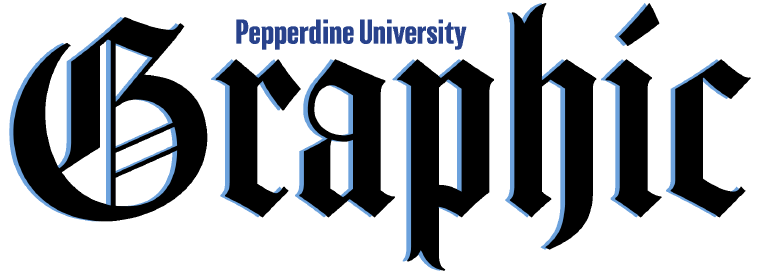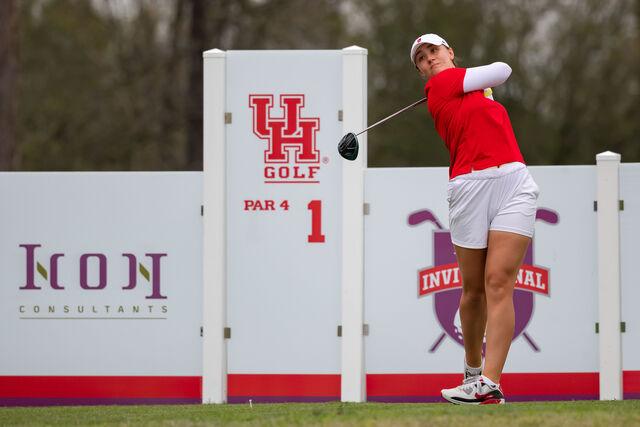
On Oct. 7, Judge Claudia Wilken granted preliminary approval to the House v. NCAA case settlement, which looks to settle three different antitrust cases against the NCAA, according to the Athletic.
The three biggest components of the House Settlement are: back paying roughly $2.8 billion to NCAA student-athletes from 2016 to Sept. 15, 2024, who weren’t able to profit off their Name, Image and Likeness (NIL), allowing a revenue-sharing system where schools can directly compensate student-athletes and replacing scholarship limits with roster limits, according to Yahoo Sports.
“This is probably the biggest change that’s happened in college athletics, perhaps ever — certainly in recent history,” Pepperdine’s Athletics Director Tanner Gardner said. “I think it, on one hand, creates a lot of opportunities, and on the other hand, it comes with challenges.”
Grant House, former Arizona State University swimmer and leading name plaintiff, originally filed the case against the NCAA and Power Five conferences in 2020. In May 2024, plaintiffs for both sides decided to settle the House case, Hubbard v. NCAA and Carter v. NCAA within this settlement, according to ESPN.
The final hearing for the House Settlement is scheduled for April 7, according to Front Office Sports.
Restrictions on Student-Athlete Monetization
Up until 2021, no NCAA student-athletes were allowed to be compensated for their NIL, according to ESPN. Some of the restrictions included not being able to get a job off campus, receive any compensation beyond a scholarship or profit off your NIL for things unrelated to sports, among other restrictions.
While all of these restrictions were in place, the NCAA would generate upwards of one billion dollars per year in revenue starting in 2016, according to ESPN.
“We get food, housing, tuition and for the rest — we’re just working hard while our coaches get paid,” said Anna Economon, University of Houston Women’s Golf redshirt senior. “The athletic department makes money, and student-athletes get nothing.”
Shabazz Napier, former University of Connecticut Men’s Basketball guard, gives an interview where he said he goes to bed starving sometimes in March 2014. This was before athletes were allowed to profit off their NIL.
As a result of these limitations and the amount of time dedicated to their sport, Economon said many student-athletes were on their own when it came to affording many necessities.
In the midst of the 2014 March Madness tournament, Shabazz Napier, former University of Connecticut Men’s Basketball guard and 2014 Final Four Most Outstanding Player, said in a March 2014 interview student-athletes should earn some type of compensation because there are nights he goes to bed hungry.
“[If] you have expenses to worry about, and you’re spending 20 to 30 hours a week on your sport, you don’t really have time to have a part-time job like other students might,” Economen said. “So NIL is really a way to substitute some of that or subsidize your time with some extra money.”
Pepperdine’s Involvement in the Settlement
The deadline to opt into the House Settlement is March 1, according to Bricker Graydon. Opting into the settlement doesn’t require schools to directly compensate players and increase the amount of scholarships; rather, it gives schools the option to do so if they choose or have the resources.
Gardner said Pepperdine intends to opt in to the settlement, come the deadline.
“We think it’s an opportunity to strategically participate in both increasing scholarships and sharing revenue,” Gardner said. “Exactly what that looks like, we don’t know 100%, but we’ve been working closely with our coaches to think about what do you need to be competitive in this new environment.”
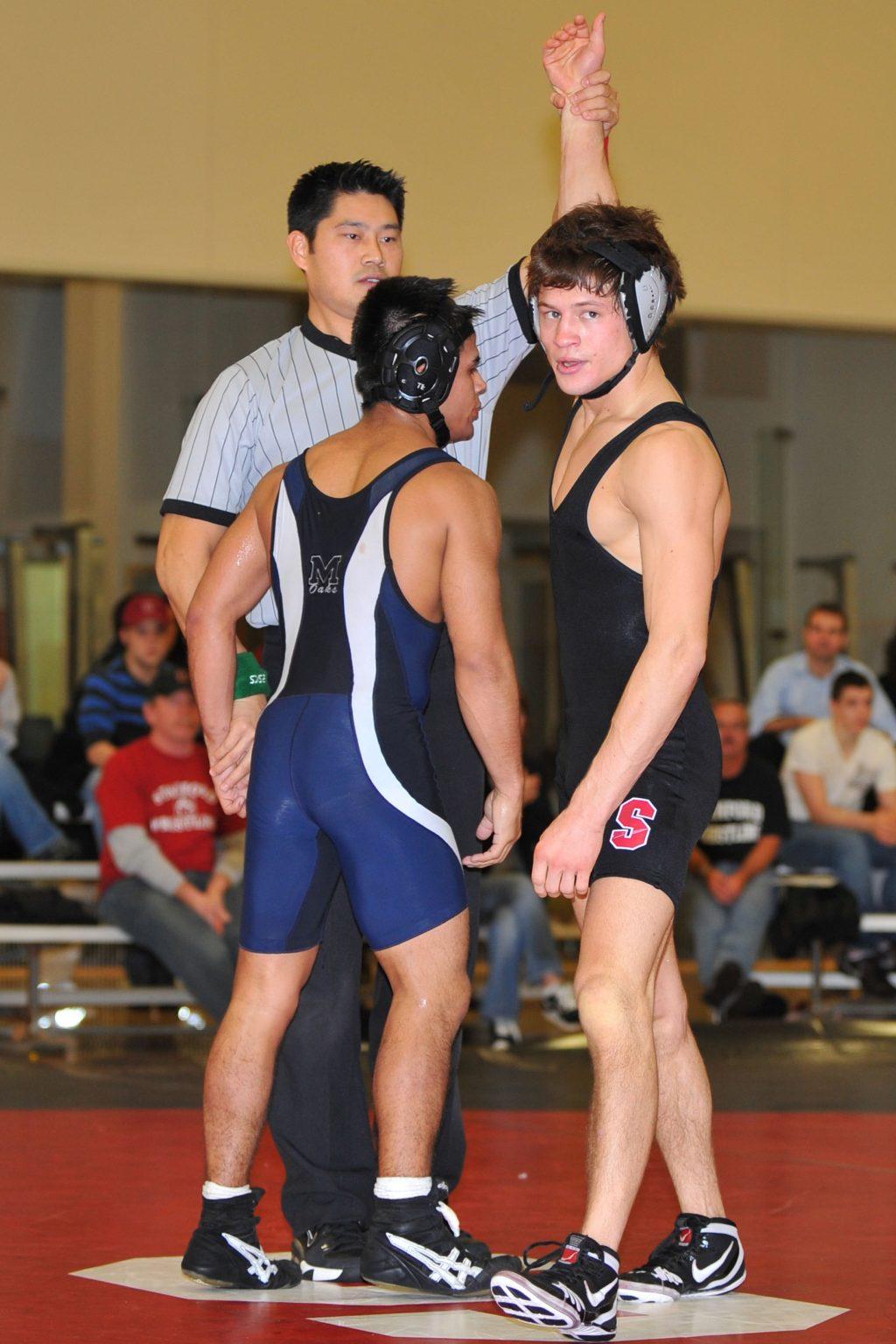
How much Pepperdine participates in what the settlement allows, Gardner said, is dependent on the amount of resources the school can generate from things such as fundraising. In Gardner’s newsletter —From the Cress — sent out Dec. 3, Gardner wrote that now more than ever they need the increased investment from supporters and donors to fully participate in the settlement.
Gardner said athletics has been more intentional about their communication to get supporters to donate and come to games.
“We’re a championship athletic department fueled by Christian values, academic excellence and community,” Gardner said. “We think that’s a compelling message, a compelling value proposition and the more people that we tell about that, the more people want to support it.”
Objections to the Settlement
As of the Jan. 31 deadline, there have been 18 objections filed against the House Settlement, with the most notable name to file an objection being LSU Women’s Gymnast Livvy Dunne, according to the Associated Press.
The main arguments against the House Settlement include the effects of stricter roster limits, the cap on revenue sharing and the potential Title IX violations that may come with back paying athletes, according to Front Office Sports.
“Wise universities and wise leaders of conferences and the association would be planning for the possibility that this doesn’t get approved,” said Alicia Jessop, Sport Administration professor and faculty athletic representative to the NCAA.
Some of the roster changes that come with the settlement include football limited to 105 players, Men’s and Women’s Basketball limited to 15 players, baseball limited to 34 players and Women’s Soccer limited to 28 players, according to ESPN. Gardner said Pepperdine Baseball, Men’s Volleyball and Men’s Water Polo are the Pepperdine sports that will be most affected.
House and his attorneys are not asking for stricter roster limits; rather, the NCAA and the Power Four conferences are adding them as an addendum, according to Yahoo Sports.
“We’ve traded scholarship limits for roster limits, which gives schools more flexibility in how they build their teams,” Jessop said. “Because if they have the revenue available to scholarship everyone, you can hypothetically recruit a better team, but we need some competitive safeguards in place, so they’re going to limit the roster size.”
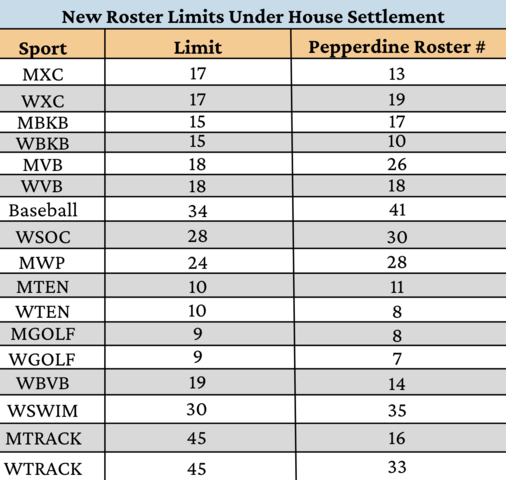
The aforementioned roster limits would also eliminate any walk-on athletes — NCAA athletes who weren’t recruited or given a scholarship. Furthermore, student-athletes who did not receive a scholarship will not be given back pay, according to ESPN.
For both of those reasons, multiple of the objections filed against the settlements have been filed by walk-ons, such as Colorado Football long snapper Camden Dempsey and David Kasemervisz, former Stanford Football wide receiver, according to ESPN and Front Office Sports.
“This settlement would essentially make 30% of a 120 man roster forfeit their NIL for free,” Dempsey wrote in a statement on X. “To suggest that walk-ons are a different class of athlete simply due to their scholarship status is outdated.”
The Graphic tried to contact Dempsey and Kasemervisz, but they could not be reached.
🚨Gov’s thoughts on House vs NCAA:
— Camden Dempsey (@CamdenDempsey) July 31, 2024
Why is the settlement limited to scholarship players only? Walk-ons are an integral component of college football, and this settlement seems to suggest that they are a different class of player, and that their NIL is worthless.
When the NCAA… https://t.co/MeKGuiya78
If approved, this settlement would set up a revenue-sharing system where schools can directly compensate athletes monetarily, which would cap at $20-22 million per year, according to the National Law Review.
Jessop said some objectors have issues with revenue-sharing since the $20-22 million cap repeats the same problem of illegal price fixing because that number was decided by attorneys and not collectively bargained for.
“There hasn’t been active bargaining by pure representatives for employees on what the fair wage or the fair compensation structure should be,” Jessop said. “Rather, this was an arbitrary number that was set by plaintiffs attorneys.”
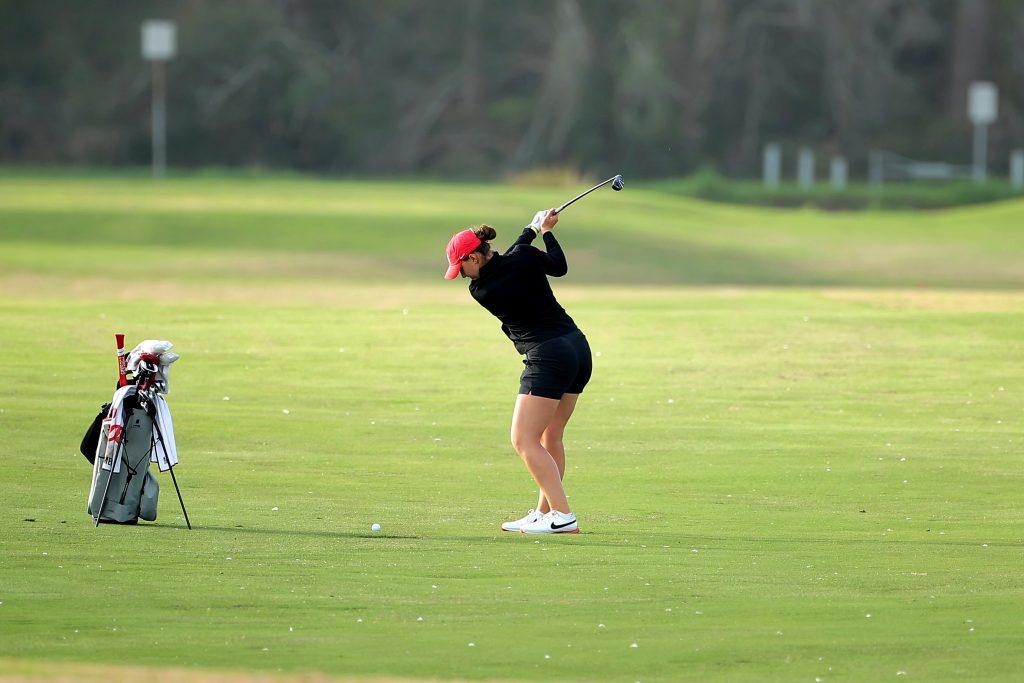
In order for athletes to get their back pay, Peter Boyle, founder of the NIL agency Activate Sports Management and who filed an objection on behalf of 25 ASU athletes, said each school an athlete competed at must send them a login where they can decide to opt in and see how much money they will be owed.
Instead however, Boyle said institutions aren’t sending logins to previous athletes, the amount of money listed is changing and there isn’t a sufficient contact person for athletes to ask questions. Thus, he filed an objection in hopes these issues would be fixed.
“If someone would sit down with them and explain in a clear way why that number is what it is, and it actually made sense, then okay — that’s really all we’re asking,” Boyle said.
Of the $2.8 billion in back pay, roughly 90% of that money is expected to go toward football and Men’s Basketball players, according to Yahoo Sports. Furthermore, only 5% is expected to go toward women’s sports as a whole, Jessop said.
As of 2023, 52% of the top 100 athletes, based on the amount of NIL deals, are women athletes, according to Marketing Brew.
“We’ve seen a lot of female athletes do really well in the NIL space,” Economon said. “And to just say, ‘You’re getting 5% of the money just because you’re a female athlete, and we don’t think you have the same value as the football or basketball players,’ seems wrong to me.”
__________________
Follow the Graphic on Twitter @PeppGraphic
Contact Tony Gleason on Twitter (@tony__gleason) or via email: anthony.gleason@pepperdine.edu
